Click on images to enlarge
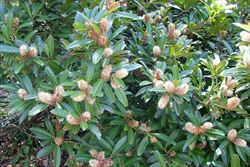
habit (Photo: Sheldon Navie)

close-up of stem and bases of leaves (Photo: Sheldon Navie)
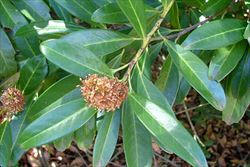
leaves and old flower cluster (Photo: Sheldon Navie)

glossy green leaves (Photo: Sheldon Navie)

close-up of younger stem and leaf undersides (Photo: Sheldon Navie)

elongated flower clusters (Photo: Sheldon Navie)
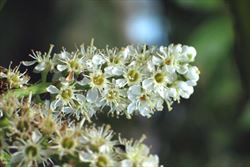
close-up of flowers (Photo: Jackie Miles and Max Campbell)
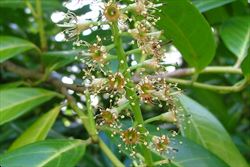
old flowers (Photo: Sheldon Navie)

immature and mature fruit (Photo: Jackie Miles and Max Campbell)
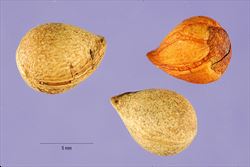
close-up of seeds (Photo: Tracey Slotta at USDA PLANTS Database)
Scientific Name
Prunus laurocerasus L.
Family
Amygdalaceae (New South Wales)Rosaceae (Queensland, the ACT, Victoria, South Australia, Tasmania and Western Australia)
Common Names
cherry laurel, cherry-laurel, common cherry laurel, common laurel, English laurel, laurel, laurel cherry
Origin
Native to south-eastern Europe (i.e. Bulgaria and Yugoslavia) and western Asia (i.e. northern Iran, Turkey, Armenia, Azerbaijan, Georgia and southern Russia).
Naturalised Distribution
This species is becoming naturalised in many parts of south-eastern Australia (i.e. in southern and north-eastern Victoria, in south-eastern South Australia, and in the northern and central tablelands regions of New South Wales). It is possibly also naturalised in other parts of New South Wales and in Tasmania.
Also naturalised beyond its native range in Europe as well as in tropical Asia, New Zealand and western USA (i.e. California, Oregon and Washington).
Notes
Cherry laurel (Prunus laurocerasus) is regarded as an environmental weed in Victoria, New South Wales and South Australia, and as a potential environmental weed or "sleeper weed" in other parts of southern Australia.
It is spread by birds and other animals into native forests, where it shades out and replaces native species, reduces biodiversity and degrades the habitat available to native fauna. Its berry-like fruit also attract aggressive birds like the introduced common myna (Acridotheres tristis) and the native pied currawong (Strepera graculina).

